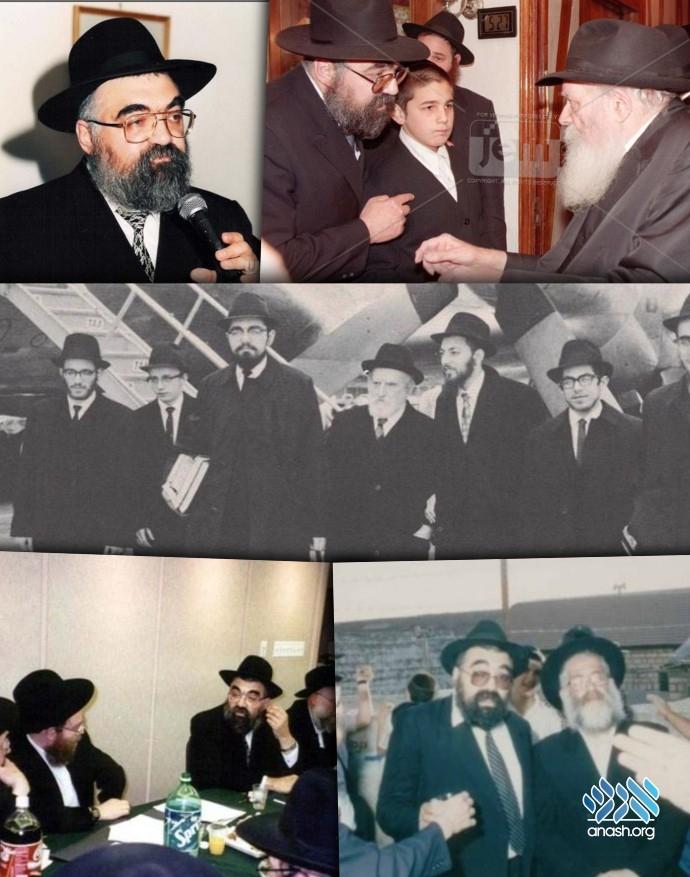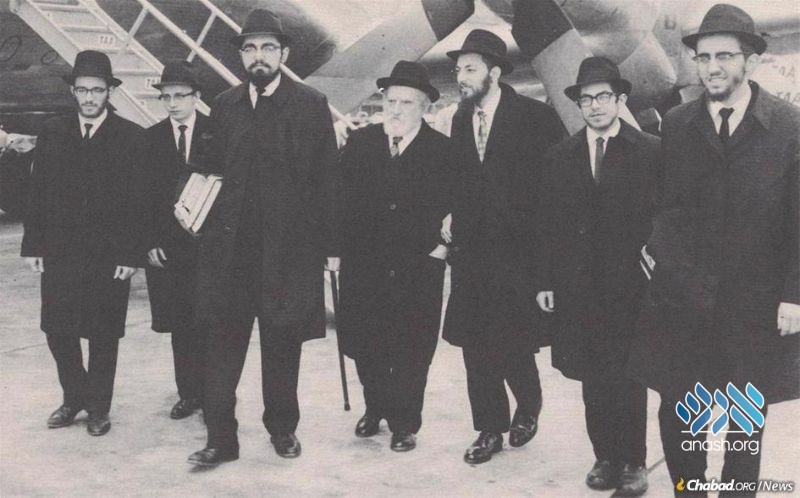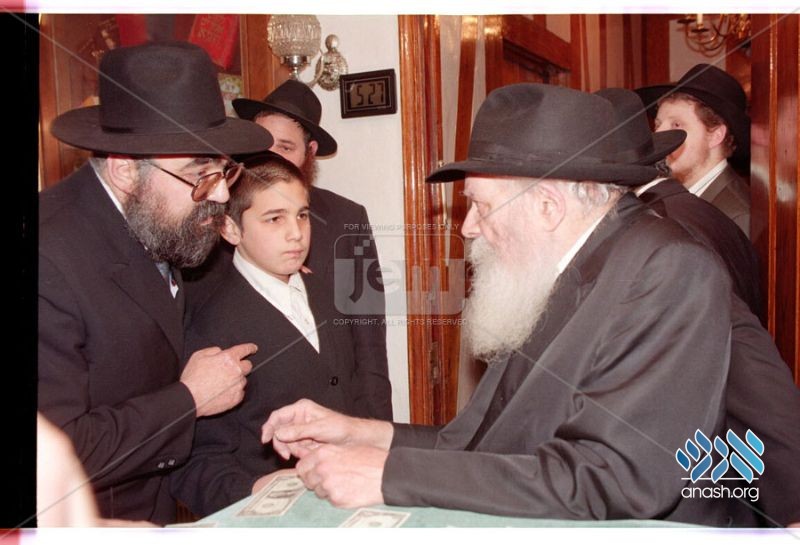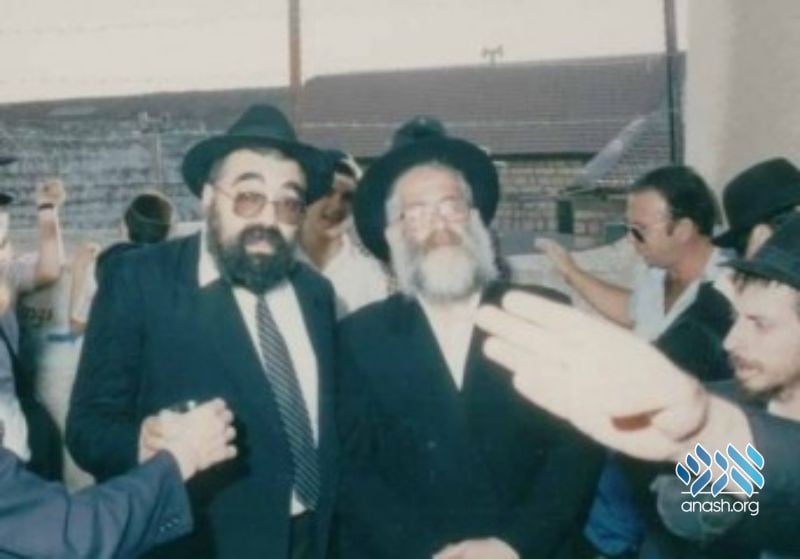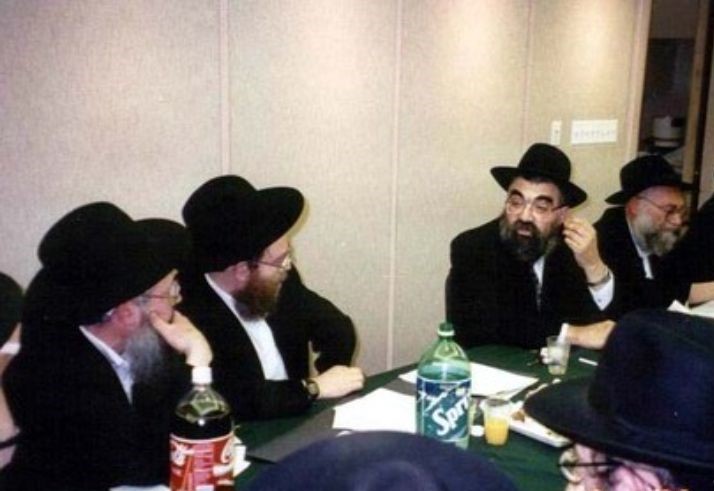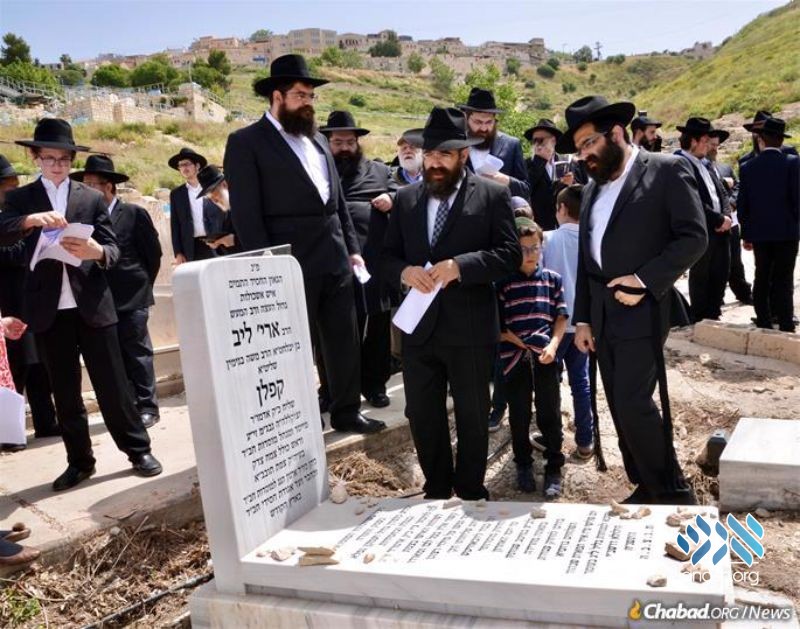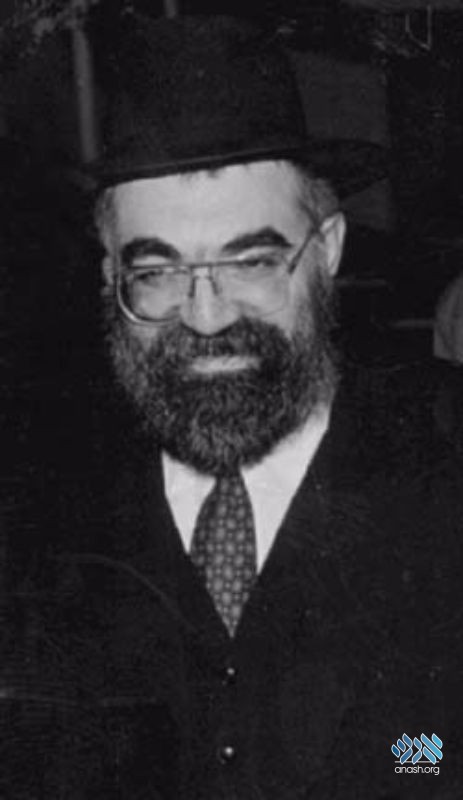Reb Leibel Kaplan, the Rebbe’s shliach to Tzfas, was a brilliant talmid chacham and an influential shliach throughout Eretz Yisroel. His sudden passing on the 16th of Iyar, 5758/1998, was a terrible blow to chassidim everywhere.
By Anash.org writer
Rabbi Arye Leib Kaplan was born in Paris on 19 Tishrei 5708/October 3, 1947 to Reb Moshe Binyomin and Sarah Kaplan, His father was a talmid of the underground chadorim and yeshivos in the USSR, his mother the daughter of the chossid Reb Nochum Yitzchok Pinson, who was exiled by the communists and passed away in 5702/1942.
As an infant, his family moved to Manchester, England. As a child, young Leibel studied at the local cheder with great hasmada and was the pride and joy of his family. At the tender age of nine, he wrote a letter to the Rebbe, having found nobody else who could answer a question he had. The Rebbe’s response was later published in Igros, vol. 15 pg. 47. The Rebbe included a whole matza along with his response; only later did people realize it was intended for the youngster.
In 5716/1956, the family moved to New York. At the age of 14, Leibel went into yechidus with the Rebbe for the first time. While in New York, he joined the group of chozrim memorizing the Rebbe’s sichos and farbrengens, many of which were six hours long, or even longer!
In 5725/1965, he left to study at the yeshiva in Montreal, where he always looked out for weaker students and helped them in their studies.
Two Year Mission in Australia
In 5726/1966, Rabbi Zalman Serebrianski founded the Yeshiva Gedola in Melbourne. He wrote to the Rebbe, asking that he send shluchim, but the Rebbe’s response was to first begin with local bochurim, and after a trial period shluchim/bochurim would be sent. A year later, Rabbi Chaim Gutnick visited the Rebbe and asked that the Rebbe send bochurim to help solidify the yeshiva. The Rebbe personally selected a group to go as shluchim for two years, learning and engaging in outreach within the Melbourne Jewish community. This group was the forerunner of similar groups sent to Lubavitch Yeshivas worldwide.
Reb Leibel, who was chosen to head the group, developed strong relationships a group of students who regarded him as their mentor to his last day. When the group returned from Australia in 1969, they merited to attend the Rebbe’s Pesach sedorim, and were shown many kiruvim.
In 5731/1971, Reb Leibel became engaged to Ms. Sara Hinda Lieberman of Detroit, the daughter of Rav Moshe Dovid and Chaya Lieberman. Rabbi Lieberman was Chief Rabbi of Antwerp, Belgium, until his passing a few months ago.
“I Am Taking Him for Myself ”
After his wedding on the 8th of Teves, Reb Leibel received numerous requests from communities around the world to serve as their leader. The Rebbe encouraged him to continue his studies and advised him on a course of study in the Kollel. When one emissary asked the Rebbe about employing the talented young man, the Rebbe responded, “I am taking him for myself.”
In addition to his studies, Reb Leibel worked for the “Vaad L’Hafotzas Sichos,” editing the sichos that were eventually published in Likutei Sichos.
A few days after Pesach 1973, Reb Leibel was summoned by the Rebbe’s Secretariat and informed about a new shlichus: he was being sent to renew the Chabad village in Tzfas. On the 15th of Tamuz Reb Leibel applied for visas at the Israeli embassy, and was told by the Rebbe to begin packing his bags before the three weeks.
After a day or two, Reb Leibel asked Rabbi Hodakov when he should leave. When Rabbi Hodakov relayed the Rebbe’s message, “Why is he waiting?” Reb Leibel immediately made the last preparations for the trip.
On Erev Rosh Chodesh Menachem Av, prior to their departure, the Rebbe walked out with Reb Leibel, his wife and baby and spoke with them for a few moments. The Rebbe gave them a letter and coins for Tzedaka. He then gave their infant Menachem Mendel the same letter and coins for Tzedaka, saying that he was also going on Shlichus and that when he grew older, it would be explained to him. The Rebbe remained standing outside of 770 until they left and their car could no longer be seen in the distance.
The first task that Reb Leibel undertook upon arriving on 3 Menachem Av was to renew the destroyed Chabad Tzemach Tzedek shul. The Rebbe advised that people should be able to daven there on Rosh Hashana and that immediately after the completion of the shul, a kolel should be created. During the next few days, a clarification arrived from the Rebbe, stating the shul should be ready in time for Slichos. On Shabbos Slichos, twenty-five people davened in the newly renovated shul.
Shortly afterward, the Yom Kippur War broke out, and the Israeli ambassador Chaim Herzog came to the Rebbe to request that he send young chassidim to boost the country’s morale. The Rebbe responded, “I have just sent you a young general!”
In 1982, the war in Lebanon erupted. Reb Leibel was advised by the Rebbe to publish a Tanya in the palace in Beirut, Lebanon, which he was to leave behind for soldiers who would be staying on. The Tanya was also printed in Tyre, Sidon, Chazavia, Nabatiye, and other locations in Lebanon.
Tzfas Mosdos
With no money or support, but with boundless optimism and military precision, the Kaplans began building. They quickly revitalized full neighborhoods and set up an educational system that today includes many institutions for boys and girls, men and women, religious as well as those not yet so. A short time before his passing, Yeshivas Tzeirei Hashluchim was established for the children of shluchim.
The city of Tzfas was energized by Rabbi Kaplan. He was involved in every facet of city life, serving as a city councilman and vice-mayor for many years. On one occasion, the Rebbe referred to him as “Director and Founder of Chabad Mosdos in Tzfas”. For many years, Reb Leibel also served as chairman of the Lubavitch umbrella organization in Eretz Yisroel. This brought him into contact with leading religious and political leaders, many of whom privately sought his advice and perspective on public policy matters. Reb Leibel combined his intense and successful activism with rare scholarly pursuits.
Scholastic Works
Reb Leibel was the author of a number of seforim, and wrote thoughtful essays on a wide range of topics in Judaism. Heeding the Rebbe’s instructions, he also held the position of rosh kolel in Tzfas. He authored a volume on the Alter Rebbe’s psokim called Piskei Admur Hazaken, culling the Alter Rebbe’s opinions on the halachos from other sources to the simanim that were not printed in the Alter Rebbe’s shulchan aruch.
In the dark days of pre-Glasnost Russia he was one of the shluchim entrusted with missions to the former Soviet Union.
In 5758/1998, when the shliach in Minsk celebrated the groundbreaking of a new building they asked Reb Leibel to attend. Despite his busy schedule, he agreed and brought with him religious articles that were unavailable in Minsk. Two bochurim from Minsk came to pick him up at the Moscow airport. Reb Leibel spent two hours with them, talking about his memories of the activities undertaken in the Soviet Union, the responsibility of a shliach, and so on.
At 4:00 AM, he leined krias shma and went to sleep in his car. One hour later, just 15 miles from the historical town of Lubavitch, a truck crashed into the car, and Reb Leibel was killed instantly. His body was later interred in the historic cemetery of Tzfas.
He was survived by his wife, Mrs. Sarah Kaplan, who continues their shlichus in Tzfas; his son, Rabbi Menachem Mendel – Detroit, Rabbi Chaim – Tzfas, Mrs. Devorah Hertzel – Ramat HaGolan, Mrs. Chana Wolf – Ashkelon, Rabbi Meir – Vancouver Island, Canada, Rabbi Zalman – Tzfas, Rabbi Levi – Detroit, Rabbi Yitzchok – Ashdod, Kayla Mushka, grandchildren and great-grandchildren who continue on in his ways and in the ways of the Rebbe.
Yehi Zichro Boruch!
(Sources: Rabbi Michoel Seligson, Chabad.org and Kfar Chabad Magazine)

